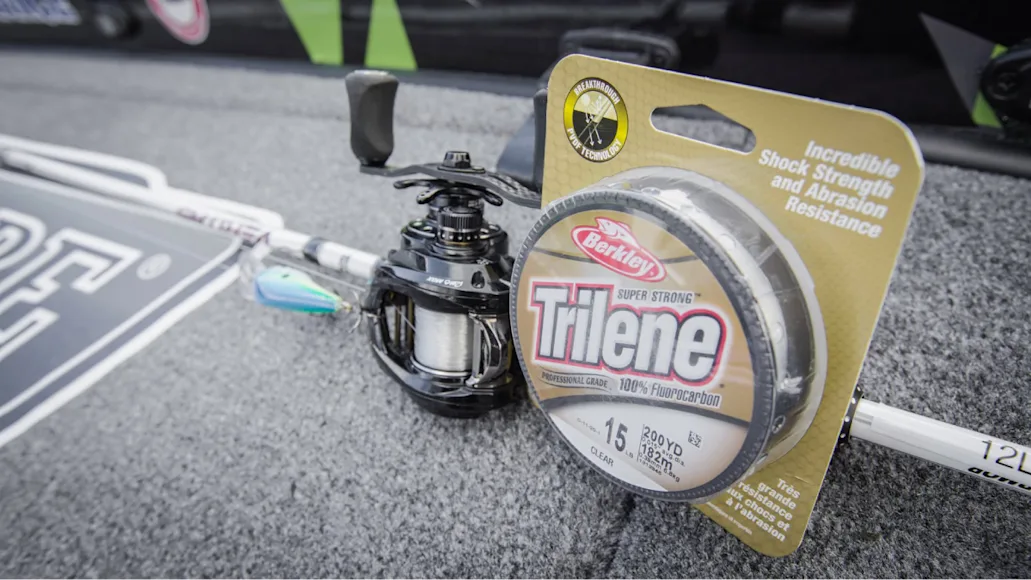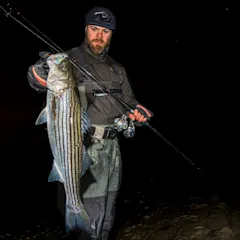_We may earn revenue from the products available on this page and participate in affiliate programs. Learn more ›
_
Best Budget

Berkley Trilene Big Game
LEARN MORE
Summary
The Trilene Big Game has a long and well-known reputation as being a quality line that performs very well for virtually any angler who prefers monofilament.
Best Overall
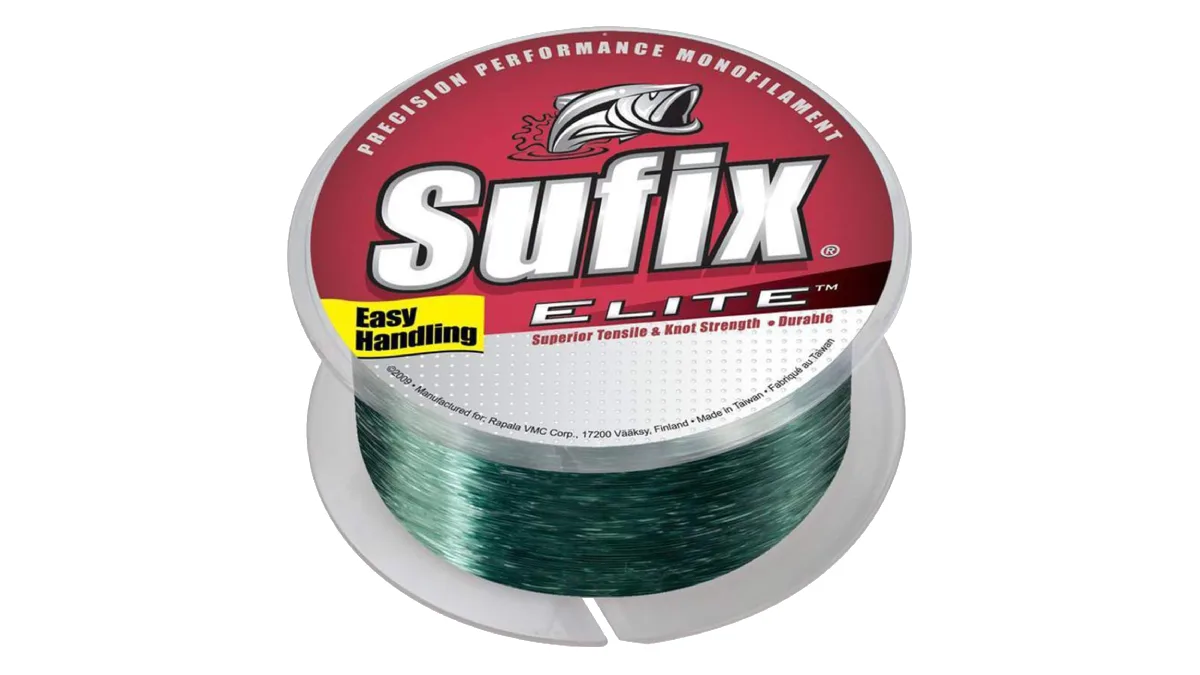
Sufix Elite Monofilament
LEARN MORE
Summary
The Sufix Elite is one of the best casting, lowest memory, moderate-stretch monofilaments on the market.
Best Fluorocarbon

Berkley Trilene 100% Fluorocarbon
LEARN MORE
Summary
This is an excellent casting fluorocarbon for the angler that wants an invisible line without having to sacrifice handling, knot strength, or diameter.
Fishing line for bass is one of the most critical pieces of gear when it comes to catching lunkers—but it’s also one of the most overlooked. Many anglers will spend hours arguing over the best lures
or debating which rods and reels are their favorite. Yet, they give almost no thought to what fishing line
is best for their specific goals and style of fishing. Braid? Monofilament? Fluorocarbon? With so many styles, types, and colors available today, trying to pick the right one can be overwhelming.
We’ve spent decades chasing bass—which means we’ve also spent decades trying to find the best fishing line for bass. The next time you go to spool your reel, use one of our favorite lines and you’ll be on your way to catching more bass.
The Best Fishing Line for Bass
Best Bass Fishing Line Overall: Sufix Elite Monofilament
Best Budget: Berkley Trilene Big Game
Best Fluorocarbon: Berkley Trilene 100% Fluorocarbon
Best Braided: Sufix 832 Advanced Superline Braid
Best For Baitcaster: Daiwa J-Braid
Best For Spinning Reel: Seaguar Basix Fluorocarbon
Best For Beginners: Stren Original Monofilament
Best Copolymer: P-Line CX Premium
Best Fly Fishing Line: Rio Mainstream Bass
How We Picked The Best Fishing Line for Bass
My choice in bass fishing lines is based on nearly 30 years of angling experience, which includes thousands of hours of bass fishing from shore, kayak, canoe, and boat. I am meticulous and very calculated when it comes to choosing my fishing gear, no matter what angling style I’m engaged in. I think that line, hooks, and terminal tackle (swivels, split rings, etc.) are often overlooked by many anglers. Frankly, I would argue they are more important than the rod, reel, or even the lures you’re using. If your choice of line has always been based simply on whatever was least expensive, or what you see someone using on TV, you are limiting yourself.

We’ve used our share of fishing line over the years. (Photo/Travis Smola)
I broke down the line choices based on specific attributes and my own experience. I have also tapped into my contacts of industry professionals, top-tier tackle suppliers and retailers, and some of the very best citizen anglers alive today. These resources and my own experience have informed all my choices here. I have carefully weighed the top factors I believe are most important to the diverse needs of bass anglers all over the country (and the world) to come up with my picks. I evaluated each line based on the following criteria:
Stretch and Sensitivity: How much stretch does the line have, and is this a positive or a negative atribute?
Abrasion Resistance and Durability: How does the line hold up to being rubbed against rocks and structure, or how will it handle vegetated areas? How long does it last after being subjected to water, sand and dirt, UV rays, and hours of casting?
Handling and Memory: Often overlooked, how limp and soft a line is has a dramatic impact on casting distance and lure action. The harder and stiffer a line is, generally, the worse it will perform.
Quality and Craftsmanship: Is the line consistent and reliable from spool to spool?
Price: Does the line offer good value for its stated purpose?
Best Bass Fishing Line Overall: Sufix Elite Monofilament
Best Overall

Pros
Extremely consistent build
Limp characteristics with excellent knot strength
Low memory and superior casting characteristics
Great value
Cons
More expensive than many other monofilament lines
In truth it’s hard to pick any one line as the best. That’s only because bass fishing is so situational in nature. The line that’s best one day can become an angler’s biggest detriment the next on the same body of water. It’s also why the pros have literally dozens of rods rigged up with every possible line combination under the sun on their boats. In any case, we chose a monofilament line
because it’s so universally versatile. Sufix lines have impressed countless anglers for a long time. It continues to be my choice for the monofilament line because it is a perfect blend of limpness, stretch, castability, and price.
The only real downside here is the premium pricing. Sure, there are more affordable lines, but they don’t last nearly as long and aren’t as good. Sufix has much better durability than low-quality mono, so you won’t be replacing it as much. I love how little memory the Elite line has. Under my normal use, it continues to come off the spool very limp, without coiling or kinking, for almost an entire season. I generally only cut back and replace it when I get into heavy cover or structure. It offers average abrasion resistance; but if you’re looking for more, Sufix Siege
is a good alternative for monofilament.
Specs
Construction and Build: Nylon Monofilament
Pound Test Available: 4-30
Colors Available: Camo, clear, neon tangerine, smoke green
Best Budget: Berkley Trilene Big Game
Best Budget

Pros
Excellent value
Abrasion-resistant
Handles well and soft enough to tie excellent knots
Good availability
Cons
Suffers from memory, which reduces casting distance
Doesn’t last as long as higher-quality lines
Simply stated, the Trilene Big Game is a legendary monofilament line. It is used by anglers of all types, for a huge variety of species, all across the world. Anglers primarily buy it because it’s inexpensive, yet retains 90% of the characteristics of more pricey lines. I have personally been using Big Game for decades, for everything from brown trout and largemouth bass
to redfish and sharks. For the bass angler looking to fish a basic, reliable, and consistent line—who isn’t faced with 100-pound fish, or 150-yard casts—you can’t go wrong with Big Game.
Specs
Materials and Construction: Nylon monofilament
Pound Test Available: 8-60
Colors Available: Solar collector, green, clear
Best Fluorocarbon: Berkley Trilene 100% Fluorocarbon
Best Fluorocarbon

Pros
Limp and handles easy
Completely invisible in the water
Abrasion-resistant while retaining excellent knot strength
Lower cost than other fluorocarbon lines
Cons
Thin diameter means weakens abrasion resistance
When I received the Berkley Professional Fluorocarbon for testing, I was skeptical. It’s extremely thin, and I thought for sure it was not going to hold up very well—especially for the bump in price compared to budget lines. I was wrong. From the moment I fished it I knew this was a winning line. It’s incredibly easy to work with, and erased much of what I don’t like (and often judge) about fluorocarbon. It’s soft, casts well, and has just the right amount of stretch (great sensitivity). In fact, I have used it to build my homemade leaders and tippet for fly fishing, on top of using it for conventional fishing. One thing is for sure: it certainly doesn’t seem to be visible to fish—whatsoever. The other major upside to this line is its low cost: for the quality and characteristics of the line, there is simply nothing as affordable. While more expensive lines might edge it out in some regards, I simply think Berkley Professional Grade Fluorocarbon is the best buy for the vast majority of anglers.
The downside to this line is its abrasion resistance. If it catches something hard and sharp, it peels and nicks relatively easily. Therefore, if you’re fishing heavy cover you have to make a choice, either try a different, harder line (like Seagur Red
) or simply go up in pound-test a bit. For example, when using Berkley Professional as a leader with my braided line, I will up the pound test quite a bit, choosing 15- or even 20-pound test instead of the 12-pound I would normally use. But if you’re generally fishing open water, or not around much structure, then I wouldn’t even consider another fluorocarbon running line. At this price, there is nothing to compare it to.
Specs
Materials and Construction: Fluorocarbon
Pound Test Available: 4-25
Colors Available: Clear
Best Braided: Sufix 832 Advanced Superline Braid
Best Braided

Pros
Excellent quality and consistent build
Long-casting and smooth handling
Durable, small diameter that will last for years
Available in a wide range of breaking strains (6-80)
Cons
Sufix 832, an 8-strand braid, isn’t as tough as some other braids
I use Sufix 832 on almost all of my reels that have braid, which is just about all of them. Sufix 832 is very consistent off the spool. I’ve loaded up thousands of yards of it on my reels and have yet to experience any weak points or variability in diameter. I also find that 832 is a durable line that doesn’t suffer from “fuzziness” or falling apart over time. For most fishermen, it’ll last many years even with regular, five-days-a-week use. It also casts extremely far, and the very thin diameter cuts through the water well. The sensitivity is excellent, but this is typical for most braided lines and not exceptional. The price of 832 is about comparable to most other high-level braids; if anything it’s actually on the slightly more affordable side. Further, I like that 832 is available all the way down to 6-pound test.
The Sufix 832 does have some downsides including weak cutting power and low abrasion resistance. Compared to other braids, it is very smooth, but this means you won’t be sawing through vegetation with it. The Sufix 832 is also pricy, and if you aren’t worried about casting distance or handling, but instead just need sensitivity and hook-setting power, the Spiderwire Stealth is a great option.
Specs
Materials and Construction: 8-strand Dyneema and GORE braid
Pound Test Available: 6-80
Colors Available: Low-vis green, hi-vis yellow, neon lime, ghost, coastal camo
Best For Baitcaster: Daiwa J-Braid
Best for Baitcaster

Pros
Extremely strong
Great abrasion resistance
Knots well
Cons
Expensive
Not the smoothest
I’ve been using Daiwa’s J-Braid with my baitcasters
for a few years now and I’m rather pleased with it. In terms of strength and abrasion resistance, I haven’t had another line that can stack up. Last year I hooked a toothy bowfin on this line. The line didn’t have a single mark on it. For anglers who want pure strength to muscle big bass up through grass mats and cover, J-Braid is a good choice. I’ve also found it to be an easy line to spool on the reel. It also knots easily and pairs well with a fluorocarbon leader for clearer waters.

J-Braid has a ton of value for the price point. (Photo/Travis Smola)
My only real complaint with this line is the price tag. It’s around $30 for 330 yards. If you have a lot of setups, it can get expensive to spool all of them. However, this is a line where I feel like I can land almost every fish I hook on it. Daiwa also makes this line in a variety of colors and weight classes that will help fit nearly every scenario.
Specs
Materials and Construction: 4 or 8-strand Dyneema
Pound Test Available: 6-80
Colors Available: Dark green, island blue, fluorescent yellow, white, chartreuse, multi-color, grey light
Best For Spinning Reel: Seaguar Basix Fluorocarbon
Best for Spinning Reel
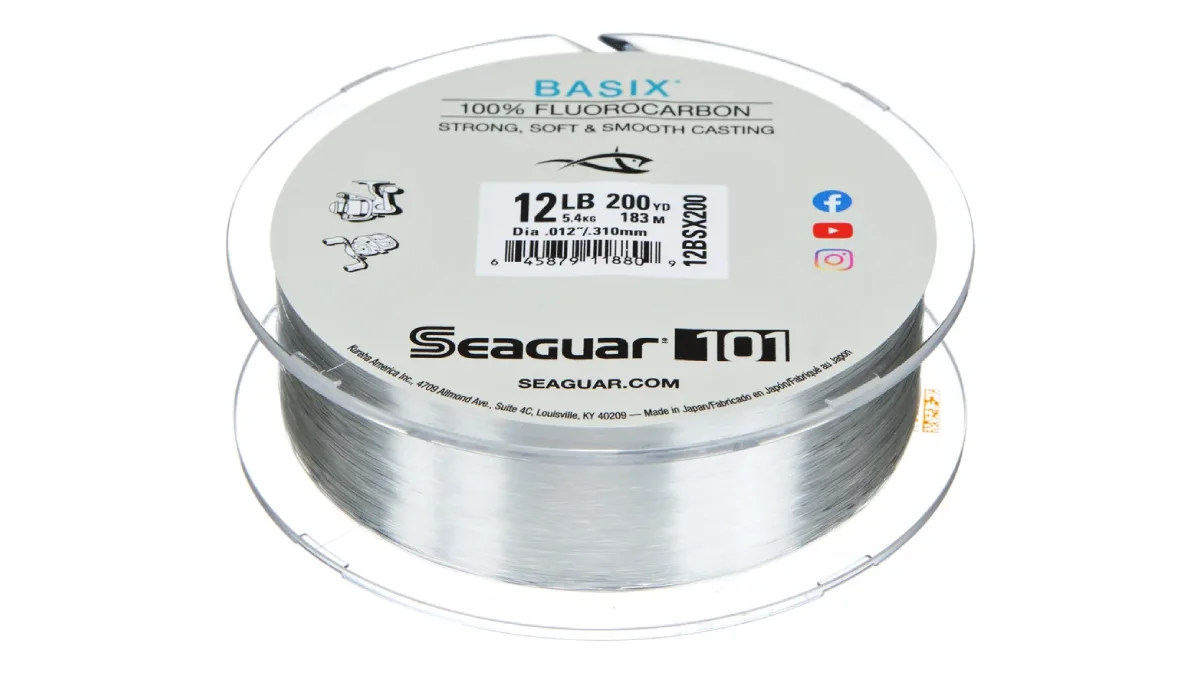
Pros
Affordable
Practically invisible
Easy to cast
Cons
Knot strength isn’t the best
Seagur has a solid and affordable fluorocarbon offering with their Basix line. It’s an excellent starter line for anglers just getting started with fluorocarbon. We like to pair this line with spinning rods since it works exceedingly well for finesse techniques like Ned rigs or drop shots. This line is a good option for clear water simply because of how well it vanishes. We also like the stretch of this line. The sensitivity is also good considering the lower price point.
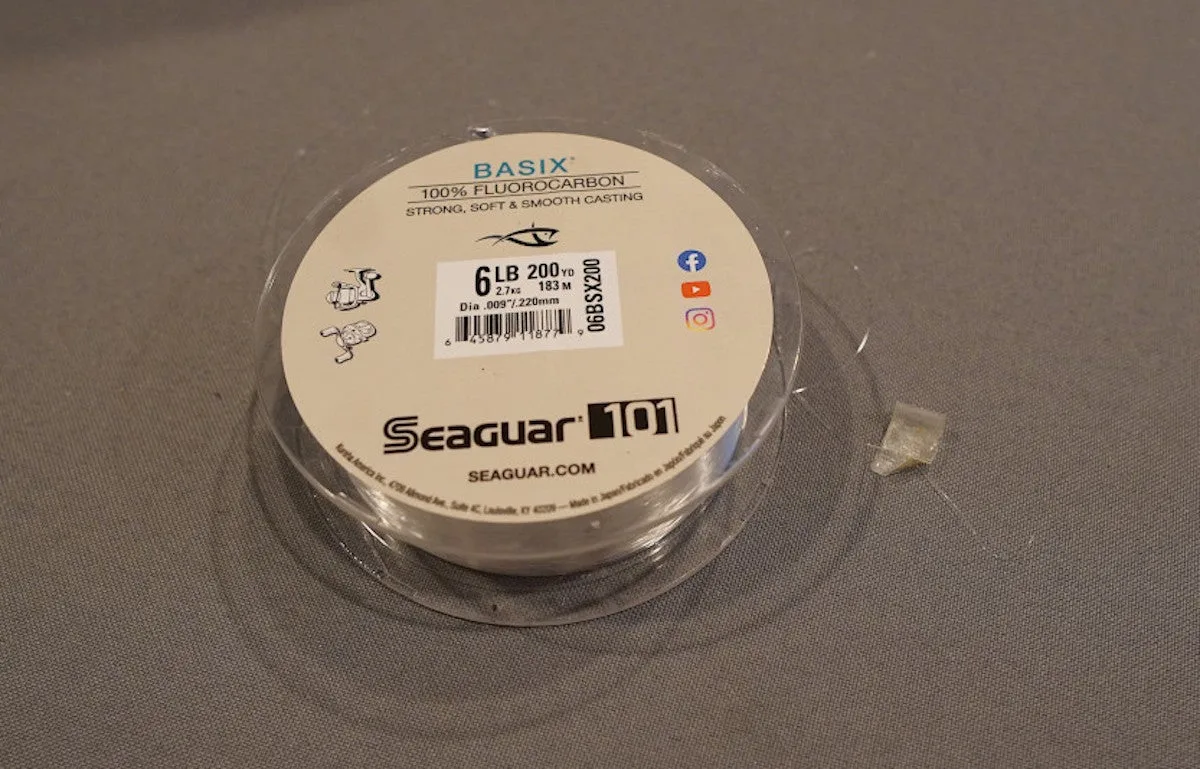
Basix is a solid line for beginners trying finesse techniques. (Photo/Travis Smola)
Knot strength isn’t the best with this line. The smaller diameter also makes them a bit difficult to tie. However, for the price point, there’s a ton of value here. Especially if you plan to rig up several rods with fluorocarbon for fast lure changes. This line is also a solid leader when paired with braid. I used it for most of my drop shot setups last year.
Specs
Materials and Construction: Fluorocarbon
Pound Test Available: 4-20
Colors Available: Clear
Best For Beginners: Stren Original Monofilament
Best for Beginners
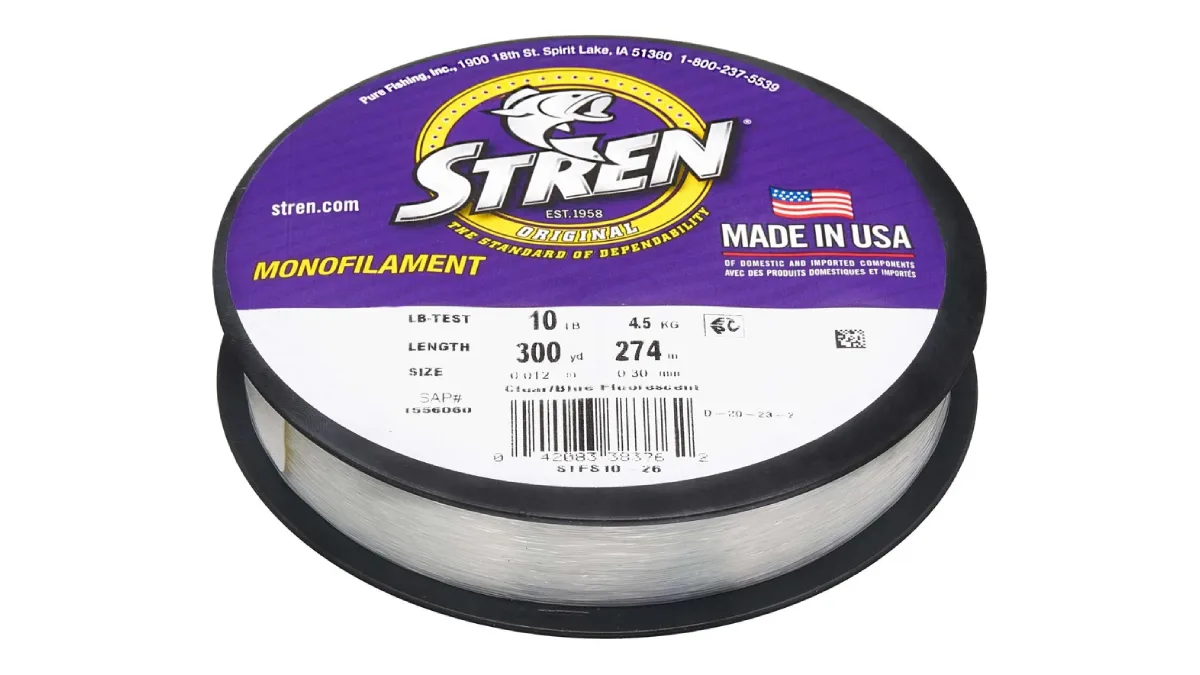
Pros
Great price point
Easy to tie knots
Versatile
Cons
Durability isn’t great
Gets dirty in heavy grass
Stren is a classic brand my dad introduced me to when I was just learning fishing. There’s nothing super fancy about this line. But I still use it today simply because it works for so many scenarios. This line is very easy to install on just about any reel. It’s also a very easy line to cast. The clear version will work for just about any water clarity and techniques. The only time I’ve ever had too much trouble with it is in heavy grass. A lot of slop will hang on this line if pulled through it.
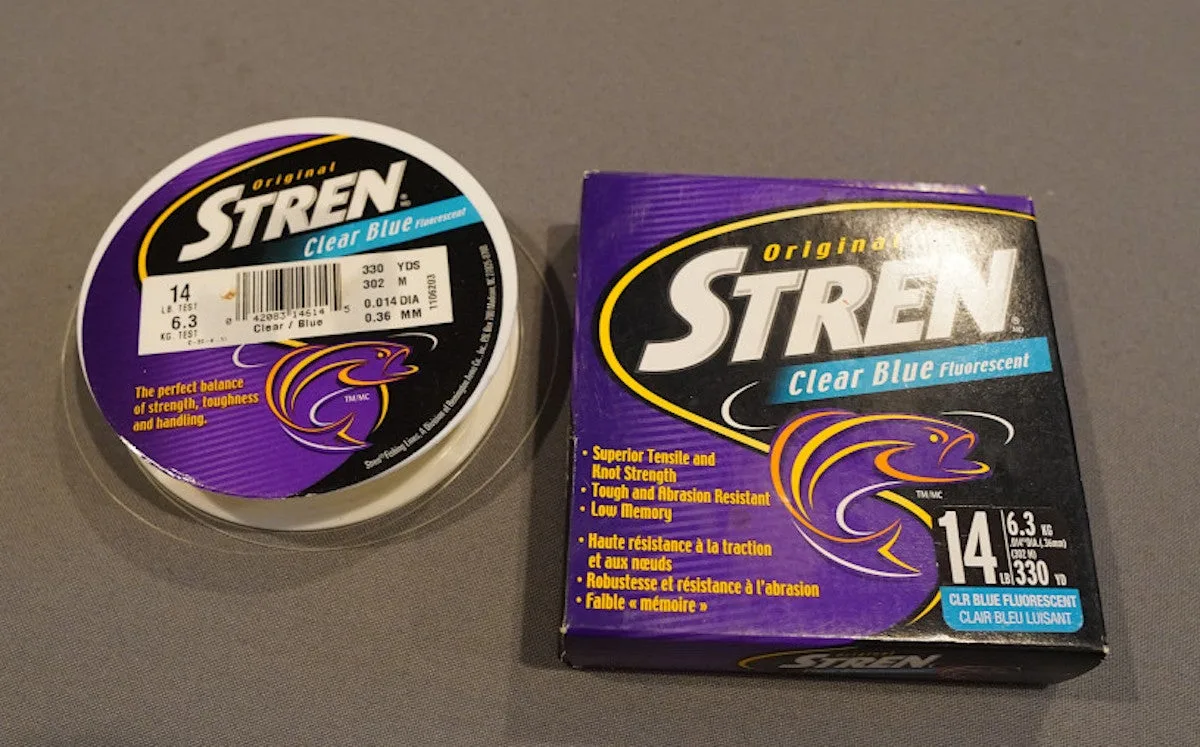
Classic Stren is versatile for a variety of scenarios without breaking the bank. (Photo/Travis Smola)
However, I’ve yet to find another line that’s easier to tie knots with. This is an excellent line for practicing the basic ones. Stren is also plenty strong for most bass fishing scenarios. Some of the largest bass that I’ve landed were on plain, eight or ten-pound clear Stren. I’ve found this line is especially good for topwaters and crankbaits. For beginner anglers who are intimidated by all the options out there, this is a great starting point. It’s also highly affordable, which means it won’t sting as much if you need to cut away some nasty tangles early in your fishing career.
Specs
Materials and Construction: Nylon monofilament
Pound Test Available: 4-30
Colors Available: Clear, clear/blue fluorescent, Hi-vis gold, hi-vis green
Best Copolymer: P-Line CX Premium
Best Copolymer

Pros
Provides attributes of both fluoro and mono in a single line
High abrasion-resistance
Good life-span and relatively low memory, particularly in lower-pound ratings
Affordable price
Cons
Does a lot very well, but nothing absolutely the best
The P-line CX is almost always going to come up in any conversation about copolymer lines. It’s renowned for its “best of all worlds” characteristics. It’s relatively easy handling compared to other copoly lines and has a reputation as being more rugged when compared to most monofilament options. It’s certainly less stretchy than mono, and you can feel that in real-world settings. For a more advanced line, the price isn’t much more than mono. This allows anglers to have multiple options without breaking the bank. P-line is also a relatively low diameter line, and definitely out-competes lower-priced lines in this category.
CX is a line of compromises, which is both its strength and weakness. It does everything pretty well, but nothing, in particular, the very best. It’s not the most rugged line, and if you’re looking for the best abrasion resistance possible you should check out P-Line CXX
. Other lines like Gamma Polyflex and the very popular Yozuri Crystal Hybrid have better handling than CX (and much better than CXX) as they are limper and softer. These both have a reputation for not being quite as tough as CX and not lasting as long. It’s all about trade-offs, but if I was going to choose just one line that wasn’t braid, I would strongly consider P-line CX as my do-it-all choice.
Specs
Materials and Construction: Two-component build with fluorocarbon coating
Pound Test Available: 2-30
Colors Available: Clear fluorescent, moss green, fluorescent green
Best Fly Fishing: Rio Mainstream Bass Fly Line
Best Fly Fishing
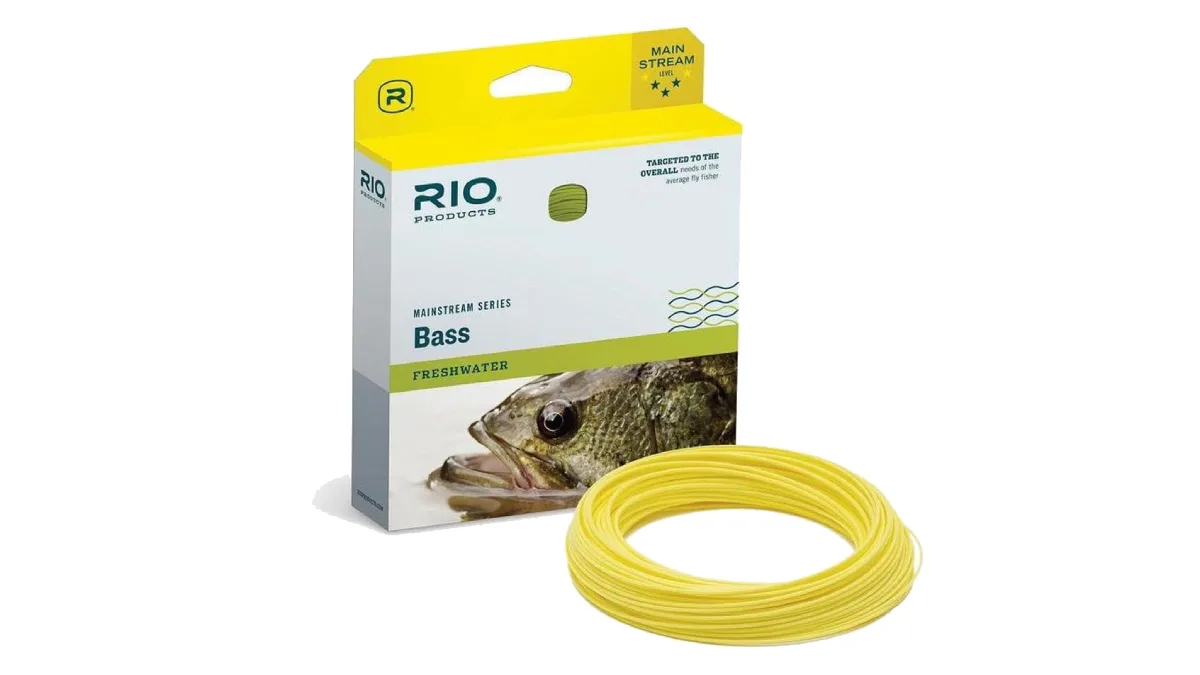
Pros
Specifically designed with bass fly anglers in mind
Rio makes some of the highest quality lines for all species
Easy to cast, particularly excellent for novice to intermediate anglers
Very affordable
Cons
Not the most technologically advanced line
Not very rugged
While there is no real need to buy a species-specific fly line for bass, it certainly doesn’t hurt. Specifically, it really helps to cast heavier, larger flies. The taper and weight of Rio Mainstream Bass will help you load up your rod with less effort, particularly in the first 30- to 50-feet of your cast. The half-size increase in weight helps with this dramatically, especially if you’re using a modern, fast-action rod. Rios Mainstream lines are all about value, and therefore they’re not the longest-lasting, most technologically advanced lines. However, they have performed for me very well with everything from largemouth bass in my local pond, to catching bonefish in the Florida Keys. While they may be marketed to the novice and intermediate anglers, I think they cast great; especially when you consider they cost half or even a third of the price of other lines.
Specs
Line Weight: 6, 7, 8, 9
Feel: Slightly heavy line with a shorter head for easeier casting
Colors Available: Yellow
What to Look For in Fishing Line for Bass
Just like rods, reels, and lures, no single line can do everything. They all have their strengths and weaknesses, which will directly impact catch rates. If you only have one rod and reel setup—or even just a few—you will have to prioritize what’s important. Decide what you need, and choose a line with characteristics that match it.
Type of Fishing Line
Monofilament: “Mono” is created from a nylon material that is extruded into a single, untwisted piece of line. It is the most common fishing line.
Copolymer: “Copoly” lines are similar to mono (nylon-based) but are made with multiple materials. Typically, there is an outer layer designed for abrasion resistance and knot strength, while the inner core will be harder with less stretch.
Fluorocarbon: “Fluoro” is made up of a material (polyvinylidene difluoride) that refracts light in such a manner that makes it “invisible” underwater. Fluoro lines look and behave similar to mono in other regards, but fluoro sinks while mono floats.
Braided: “Braid” is a complex line that is woven from thinner strands of material to make a very thin, but strong, line. Most braided lines are either low-strand (4- to 5-strands) or high-strands (8- to 10-strands), which have different characteristics, strengths, and weaknesses.
Fly lines: Made to be used with a fly rod, these lines are heavy so they can propel the fly during casting. They are not suited for conventional fishing (spinning or baitcasting).
Price
Monofilament (mono) is usually the cheapest line, followed closely by copolymer (copoly), and then distantly by fluorocarbon (fluoro) and braided lines. However, I will note that a good braided line is the least expensive in the long run, as it holds up against the elements better than the other line. Other types of lines like mono, fluoro, and copoly will break down due to the environmental factors (primarily UV sun rays and heat) and stress from casting and fighting fish.
Stretch and Sensitivity
Stretch can be important in preventing pulled or straightened hooks. However, the more stretch a line has the weaker the hooksets will be. Braid stretches the least which makes it best for driving home a solid hookset. Although, it has virtually no shock absorption. The exact opposite is true of mono, which can feel numb, and require a very hard hookset. Fluoro and copoly lines fall somewhere in between these two, though they are typically closer to mono than braid. It is also important to note that lines with more stretch will also have more memory—the coiling and twisting associated with being on a reel.
Buoyancy
Mono, copoly, and braided lines all float, while fluoro sinks. Mono and copoly are the most buoyant, which makes them great for top-water applications. Fluoro’s sink rate helps deliver lures to the bottom faster than other lines. While braid has a thin diameter that cuts through the water and decreases drag. Depending on where and how you plan to target bass, line selection will impact how well you can present your lure.
Visibility
Visibility, or rather invisibility, is where fluoro really shines. Fluoro is almost invisible in the water due to the materials it is constructed from—which refract light in such a way that the fish can’t see it. On the flip side, braid is the most visible by a substantial margin, particularly in higher-test ratings. Mono and copoly lines fall somewhere in between. Many anglers claim copoly is less visible than mono, and some companies coat the outside of their copoly lines with fluoro to decrease visibility. If I’m looking for the least visible line possible, I’m going to reach for pure fluoro.
Abrasion Resistance
Braid is the least abrasion-resistant line. It is very sensitive to being cut under any kind of strain. Fluoro is generally touted as the most abrasion-resistant, but this varies substantially with brand and model. Copoly lines are specifically made to provide better abrasion resistance than monofilaments without the stiffness and hardness that is often (but not always) associated with fluoro.
Handling
Monofilament, fluoro, and copoly are very easy to “handle.” Meaning they won’t cut your fingers or hands while fishing. These lines are easy on guides and have a lower chance of tangling and knotting. The same can’t be said for braid. For starters, it is difficult to use on a baitcaster compared to the other lines, and without experience, backlashes are likely to happen. Braid also requires different knots than the other lines. However, it takes much less effort to cast further distances and cuts through vegetation very well.
Strength
Strength is one of the most confusing factors in determining the best fishing line for bass. Let me cut to the chase—no line construction is stronger than any other. That is, braid is not stronger than mono, or fluoro, or copoly. Instead, line ratings determine strength. The rating on the box will tell you how strong the line is. If the box says 12-pound test, then it will break under a steady strain of 12-pounds. It doesn’t matter if it is mono, fluoro, copoly, or braid.
This isn’t to say some poor-quality, cheaply made lines aren’t weaker than high-quality lines, or that all lines rated to 12-pounds break at the exact same point. Instead, my point is that the material (mono, fluoro, braid, or copoly) doesn’t make a line strong—but rather diameter, quality control, craftsmanship, and design are what determine line strength.
Diameter
It is true that some line construction is stronger than others per a given line diameter. Diameter is simply how thick the line is. Braid, for example, is extremely thin. At the same thickness, braid will be much stronger than mono, fluoro, or copoly lines. A 0.23mm braided line will be about 20-pound test, while mono would only be 6-pound test (and often much less). It’s important to note that diameter dramatically impacts abrasion resistance—a thicker line can take deeper nicks and more rash before it breaks. Also, mono, fluoro, and copoly lines can take some hits and still keep on working. Braid, however, tends to be all-or-none; it doesn’t nick or rash, it snaps.
Fly Lines
The fly line is probably the most critical piece of gear in fly fishing for bass. The line is what propels the fly, and having adequate weight to turn over heavy streamers and poppers makes casting more manageable and less tiring. There are quite a few bass-specific lines available today. They are generally floating lines, have aggressive front tapers, low-friction coatings, and are a half- or whole-line weight heavy to load up the rod quickly. If you’re looking to try out fly fishing for bass, purchasing one of these species-specific lines will ensure you have the very best setup.
Read Next: The Best Saltwater Fishing Line
FAQs
Q: Is braid or fluorocarbon better for bass fishing?
Both line types have their uses in bass fishing. It’s more a matter of picking the right line for the situation at hand. Braid is better for flipping jigs or working topwater frogs through heavy vegetation. Fluorocarbon is better for scenarios that call for a sensitive line such as Carolina rigs, Ned rigs, or drop shot.
Q: What is the best pound test for bass fishing?
For most bass fishing scenarios, a 10-pound test line is fine. This size line will impart the best action and have the most strength for fighting a fish. When fishing lures like crankbaits that run deep and aggressive, it’s not a bad idea to step up to 12 or 14-pound test. Likewise for scenarios where there’s heavy grass.
Q: What color line is best?
For the most part, color should be the last consideration when choosing line. It simply doesn’t matter that much. In fact, I’d look around for colors that could potentially get you a better price on a line, like colors that are being discontinued or that aren’t as popular.
That said, if I had to choose a color for copoly, fluoro, or mono, I would go with clear. It’s the most popular option and your best bet. As far as braid colors, anything will work, whether it’s blue, neon yellow, white, or red. Personally, I like a white line. It blends in better with a bright sky while not standing out too much underwater.
Q: Is 10-pound braid stronger than 10-pound mono?
No. This is a common misconception, and mono can be stronger than braid in many situations. What confuses a lot of anglers is that braid is much thinner at the same test rating as mono—10-pound braid is as thin or thinner than 4-pound test mono.
Therefore, if you’re asking if braid is stronger than mono at the same thickness the answer is yes, braid is much stronger. However, that doesn’t mean it’s stronger if we’re comparing 10-pound braid to 10-pound mono. If the box says 10-pounds, the line is rated to 10-pounds: It doesn’t matter if it’s braid, mono, copoly, fluoro, wire, or lead-core.
What Is the Best Fishing Line for Bass?
There is no such thing as one line that is the very best for bass. It really comes down to your techniques, style, and preferences. However, the consistency, castability, and low memory all combine to make the Sufix Elite line
our favorite. Not many fishing lines exist that last as long as this monofilament, and it’s versatile for everything from topwaters to the deepest diving crankbaits. The Sufix Elite’s extra cost is worth the admission price, especially when targeting larger bass.
Best Bass Fishing Line Overall: Sufix Elite Monofilament
Best Budget: Berkley Trilene Big Game
Best Fluorocarbon: Berkley Trilene 100% Fluorocarbon
Best Braided: Sufix 832 Advanced Superline Braid
Best For Baitcaster: Daiwa J-Braid
Best For Spinning Reel: Seaguar Basix Fluorocarbon
Best For Beginners: Stren Original Monofilament
Best Copolymer: P-Line CX Premium
Best Fly Fishing Line: Rio Mainstream Bass
Why Trust Us
For more than 125 years, Field & Stream has been providing readers with honest and authentic coverage of outdoor gear. Our writers and editors eat, sleep, and breathe the outdoors, and that passion comes through in our product reviews. You can count on F&S to keep you up to date on the best new gear. And when we write about a product—whether it’s a bass lure or a backpack—we cover the good and the bad, so you know exactly what to expect before you decide to make a purchase.

